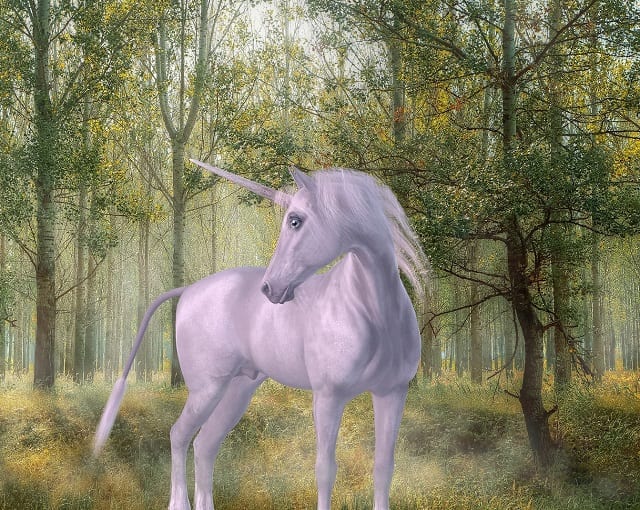
I continue my critiques of Why I Became an Atheist, by John W. Loftus.
I first ran across former Christian minister Loftus back in 2006. We dialogued about the problem of evil, and whether God was in time. During that period I also replied to an online version of his deconversion: which (like my arguments about God and time) he didn’t care for at all. I’ve critiqued many atheist deconversion stories, and maintain a very extensive web page about atheism. In 2007 I critiqued his “Outsider Test of Faith” series: to which he gave no response. Loftus’ biggest objection to my critique of his descent into atheism was that I responded to what he called a “brief testimony.” He wrote in December 2006 (his words in blue henceforth):
Deconversion stories are piecemeal. They cannot give a full explanation for why someone left the faith. They only give hints at why they left the faith. It requires writing a whole book about why someone left the faith to understand why they did, and few people do that. I did. If you truly want to critique my deconversion story then critique my book. . . . I challenge you to really critique the one deconversion story that has been published in a book. . . . Do you accept my challenge?
I declined at that time, mainly (but not solely) for the following stated reason:
If you send me your book in an e-file for free, I’d be more than happy to critique it. I won’t buy it, and I refuse to type long portions of it when it is possible to cut-and-paste. That is an important factor since my methodology is Socratic and point-by-point. . . . You railed against that, saying that it was a “handout.” I responded that you could have any of my (14 completed) books in e-book form for free.
Throughout August 2019, I critiqued Dr. David Madison, a prominent contributor to Loftus’ website, Debunking Christianity, no less than 35 times. As of this writing, they remain completely unanswered. I was simply providing (as a courtesy) links to my critiques underneath each article of Dr. Madison’s, till Loftus decided I couldn’t do that (after having claimed that I “hate” atheists and indeed, everyone I disagree with). I replied at length regarding his censorship on his website. Loftus’ explanation for the complete non-reply to my 35 critiques was this: “We know we can respond. It’s just that we don’t have the time to do so. Plus, it’s pretty clear our time would be better spent doing something else than wrestling in the mud with you.” Meanwhile, I discovered that Dr. Madison wrote glowingly about Loftus on 1-23-17:
When the history of Christianity’s demise is written (it will fade eventually away, as do all religions), your name will feature prominently as one who helped bring the world to its senses. Your legacy is secure and is much appreciated.
This was underneath an article where Loftus claimed: “I’ve kicked this dead rodent of the Christian faith into a lifeless blob so many times there is nothing left of it.” I hadn’t realized that Loftus had single-handedly managed to accomplish the stupendous feat of vanquishing the Hideous Beast of Christianity (something the Roman Empire, Muslims, Communists, and many others all miserably failed to do). Loftus waxed humbly and modestly ten days later: “I cannot resist the supposition that my books are among the best. . . . Every one of my books is unique, doing what few other atheist books have done, if any of them.”
These last three cited statements put me “over the edge” and I decided to buy a used copy of his book, Why I Became an Atheist (revised version, 2012, 536 pages) and critique it, as he wanted me to do in 2006. Moreover, on 8-27-07 he made a blanket challenge about the original version of this book: “I challenge someone to try this with my book. I might learn a few things, and that’s always a goal of mine. Pick it up and deal with as many arguments in it that you can. Deal with them all if you can.” His wish is granted (I think he will at length regret it), and this will be my primary project (as a professional apologist) in the coming weeks.
Despite all his confident bluster, I fully expect him to ignore my critiques: just like Madison and “Bible Basher” Bob Seidensticker, who also has ignored 35 of my critiques (that he requested I do). If Loftus decides to defend his views, I’m here; always have been. And I won’t flee for the hills, like atheists habitually do, when faced with substantive criticism.
The words of John Loftus will be in blue.
*****
Loftus notes that the King James Version “used the word unicorn to refer to a beast in the Bible” (p. 263). Perhaps realizing how weak this argument is, he qualified: “at the very minimum, the King James translators were themselves believers in mythical beasts” (p. 263).
It’s irrelevant what some translators in 1611 thought. That error would be on them, not the Bible, if in fact, there is no linguistic basis for the translation. The latter is in fact the case. Bert Thompson, in his article for Apologetics Press, “Unicorns, Satyrs, and the Bible” observed:
[T]he Bible never “panders to pagan mythology” by incorrectly referring to non-existent, mythological animals as if they were real, living creatures. It is true that the word “unicorn” appears in the King James Version (nine times: Numbers 23:22; 24:8; Deuteronomy 33:17; Job 39:9,10; Psalms 22:21; 29:6; 92:10; and Isaiah 34:7). . . . The editors of the Encyclopaedia Britannica [wrote]:
Certain poetical passages of the biblical Old Testament refer to a strong and splendid horned animal called re’em. This word was translated “unicorn” or “rhinoceros” in many versions of the Bible, but many modern translations prefer “wild ox” (aurochs), which is the correct meaning of the Hebrew re’em (1997, 12:129).
In volume one of his two-volume set, Asimov’s Guide to the Bible, the late infidel, Isaac Asimov (who was serving as the president of the American Humanist Association when he died in 1992), dealt with the topic of the unicorn as it is found in the King James Version when he wrote:
The Hebrew word represented in the King James Version by “unicorn” is re’em, which undoubtedly refers to the wild ox (urus or aurochs) ancestral to the domesticated cattle of today. The re’em still flourished in early historical times and a few existed into modern times, although it is now extinct. It was a dangerous creature of great strength and was similar in form and temperament to the Asian buffaloes.
The Revised Standard Version translates re’em as “wild ox.” The verse in Numbers is translated as “they have as it were the horns of the wild ox,” while the one in Job is translated “Is the wild ox willing to serve you?” The Anchor Bible translates the verse in Job as “Will the buffalo deign to serve you?” . . .
When the first Greek translation of the Bible was prepared about 250 B.C., the animal was already rare in the long-settled areas of the Near East and the Greeks, who had no direct experience with it, had no word for it. They used a translation of “one-horn” instead and it became monokeros. In Latin and in English it became the Latin word for “one-horn”; that is, “unicorn.”
The Biblical writers could scarcely have had the intention of implying that the wild ox literally had one horn. There is one Biblical quotation, in fact, that clearly contradicts that notion. In the Book of Deuteronomy [33:17—BT], when Moses is giving his final blessing to each tribe, he speaks of the tribe of Joseph (Ephraim and Manasseh) as follows: “His glory is like the firstling of his bullock, and his horns are like the horns of unicorns….” . . .
Dr. Asimov was correct on all counts. The word re’em does refer to the wild ox, and is translated as such in almost all later versions of the Bible. The translators of the Septuagint rendered re’em by the Greek monokeros (one horn) on the basis of the relief representations of the “wild ox” in strict profile that they found in Babylonian and Egyptian art (cf. Pfeiffer, et al., 1975, p. 83). The charge that the Bible “panders to pagan mythology” cannot be sustained, once all the relevant facts are known.
Loftus pokes fun of the supposed literal biblical belief in “Satyrs — creatures that were half man and half goat or horse (Isaiah 13:31)” (p. 263). The same article above disposes of this charge:
In the Old Testament, the Hebrew word sa‘ir occurs some fifty-two times. It is related to the term se‘ar (hair), and generally means “a hairy one.” It is used, for example, to speak of the male goat that was employed as the Israelites’ solemn, collective sin offering on the Day of Atonement (Leviticus 16).
In two cases, however, the King James Version renders sa‘ir as “satyr” (Isaiah 13:21 and 34:14). But the specific context of both passages makes it quite clear that the term is being used to refer to the wild goats that frequently inhabited the ruins of both ancient Babylon and Edom. On two different occasions in the KJV, the word is translated “demon” (Leviticus 17:7; 2 Chronicles 11:15), where it denotes a pagan god in goat form (cf. the New International Version). In regard to 2 Chronicles 11:15, respected Old Testament scholar J. Barton Payne wrote:
Far from being mythological “satyrs,” as claimed by “liberal” criticism, the sirim appear to have been simply goat idols, used in conjunction with the golden calves (1969, p. 400).
It is evident once again that the Bible does not lower itself to superstitious mythology. “Satyr” is merely a translation error, not a case of “mistaken identity” wherein a mythological creature was thought by the inspired writers to be a living, breathing animal.
Loftus brings up “Leviathan” (p. 262) and “Behemoth” (p. 263) and taunts on the next page: “how can God defeat mythical beasts that do not exist?” According to New Bible Dictionary, Leviathan in Psalms 104:26 is “generally thought to be the whale.” In Job 41:1-34, “most scholars” think it is a crocodile. In other instances, the use is clearly symbolic. Smith’s Bible Dictionary essentially concurs:
In the Hebrew Bible the word livyathan , which is, with the foregoing exception, always left untranslated in the Authorized Version, is found only in the following passages: ( Job 3:8 ; 41:1 ; Psalms 74:14 ; 104:26 ; Isaiah 27:1 ) In the margin of ( Job 3:8 ) and text of ( Job 41:1 ) the crocodile is most clearly the animal denoted by the Hebrew word. ( Psalms 74:14 ) also clearly points to this same saurian. The context of ( Psalms 104:26 ) seems to show that in this passage the name represents some animal of the whale tribe, which is common in the Mediterranean; but it is somewhat uncertain what animal is denoted in ( Isaiah 27:1 ) As the term leviathan is evidently used in no limited sense, it is not improbable that the “leviathan the piercing serpent,” or “leviathan the crooked serpent,” may denote some species of the great rock-snakes which are common in south and west Africa.
New Bible Dictionary on “Behemoth” states that the word occurs nine times in the Old Testament, “and in all but one of these occurrences ‘beasts’, ‘animals’, or ‘cattle’ is apparently the intended meaning.” In Job 40:15, “the hippopotamus . . . seems to fit the description best.” The Catholic Encyclopedia (“Animals in the Bible”) agrees:
. . . generally translated by “great beasts”; in its wider signification it includes all mammals living on earth, but in the stricter sense is applied to domesticated quadrupeds at large. However in Job 40:10, where it is left untranslated and considered as a proper name, it indicates a particular animal. The description of this animal has long puzzled the commentators. Many of them now admit that it represents the hippopotamus, so well known to the ancient Egyptians; it might possibly correspond as well to the rhinoceros.
No necessary interpretation of mythical animals here . . . Loftus notes that the Bible references “dragons” (p. 263). Smith’s Bible Dictionary states concerning this:
The translators of the Authorized Version, apparently following the Vulgate, have rendered by the same word “dragon” the two Hebrew words tan and tannin , which appear to be quite distinct in meaning.
-
The former is used, always in the plural, in ( Job 30:29 ; Psalms 44:19 ; Isaiah 34:13 ; 43:20 ; Jeremiah 9:11 ) It is always applied to some creatures inhabiting the desert, and we should conclude from this that it refers rather to some wild beast than to a serpent. The syriac renders it by a word which, according to Pococke, means a “jackal.”
-
The word tannin seems to refer to any great monster, whether of the land or the sea, being indeed more usually applied to some kind of serpent or reptile, but not exclusively restricted to that sense. ( Exodus 7:9 Exodus 7:10 Exodus 7:12 ; 32:33 ; Psalms 91:13 )
The Catholic Encyclopedia (“Animals in the Bible”) has an excellent treatment of “dragon”:
It stands indeed for several Hebrew names:
- (1) thán (Job 30:29; Isaiah 34:13; 35:7; 43:20; Jeremiah 9:11; 10:22; 14:6; 49:33; 51:37; Micah 1:8; Malachi 1:3), unquestionably meaning a denizen of desolate places, and generally identified with the jackal;
- (2) tánnîm, in a few passages with the sense of serpent [Deuteronomy 32:33; Psalm 90:13; Daniel 14:22-27), in others most likely signifying the crocodile [Psalm 73:13; Isaiah 51:9; Ezekiel 29:3], or even a sea-monster (Ezekiel 32:2), such as a whale, porpoise, or dugong, as rightly translated Lamentations 4:3, and as probably intended Psalm 148:7;
- (3) líweyãthãn (leviathan), meaning both the crocodile [Psalm 73:14] and sea-monster [Psalm 103:26];
- (4) çiyyim (Psalm 73:14; Jeremiah 1:39), which possibly means the hyena.
Other places, such as Esther 10:7; 11:6; Ecclesiasticus 25:23, can be neither traced back to a Hebrew original, nor identified with sufficient probability. . . . Of the fabulous dragon fancied by the ancients, represented as a monstrous winged serpent, with a crested head and enormous claws, and regarded as very powerful and ferocious, no mention whatever is to be found in the Bible. The word dragon, consequently, should really be blotted out of our Bibles, except perhaps Isaiah 14:29 and 30:6, where the draco fimbriatus is possibly spoken of.
The word itself doesn’t have to necessarily refer to a mythical creature, and scientists at the time of the King James Version in 1611 referred to large serpents as “dragons.” Wikipedia in its article on dragons provides the etymology:
The word dragon entered the English language in the early 13th century from Old French dragon, which in turn comes from Latin: draconem (nominative draco) meaning “huge serpent, dragon”, from Ancient Greek δράκων, drákōn (genitive δράκοντος, drákontos) “serpent, giant seafish”. The Greek and Latin term referred to any great serpent, not necessarily mythological.
Loftus brings up (p. 263) another mythical creature, the cockatrice. The King James Version uses it at Isaiah 11:8 and 14:29, and Jeremiah 8:17, but this may be considered eccentric usage, not followed by modern translations, which usually translate the Hebrew, Tsepha , or Tsiphoni, as cobra or asp (Is 11:8), and viper / poisonous snake / adder (Is 14:29). Catholic apologist Trent Horn adds:
While Isaiah and Jeremiah would have been unaware of the “cockatrice,” they would have known what a tsepha‘ was. This is the original Hebrew word used in passages like Isaiah 11:8 and it simply means “snake” or “viper.” Today, most modern translations render passages like Isaiah 11:8 in this way, . . .
Again, we need not posit any mythological animals here, either.
Lastly, Loftus mentions “Fiery serpents (Deuteronomy 8:15), and Flying serpents (Isaiah 30:6)” (p. 263). The latter is also found in Isaiah 14:29, and the former at Numbers 21:6-8. Wikipedia has an excellent article, “Fiery flying serpent” that lists all these passages and provides an altogether adequate and plausible explanation (see further source information there):
Ronald Millett and John Pratt identify the fiery serpent with the Israeli saw-scale viper or carpet viper (Echis coloratus) based on ten clues from the written sources: the serpents inhabit the Arava Valley, prefer rocky terrain, are deadly poisonous, extremely dangerous, especially painful “fiery” bite, reddish “fiery” color, lightning fast strike, leaping/”flying” strike, and death by internal bleeding. A Roman account dated 22 AD about the deserts of Arabia indicates the presence of the saw-scale viper, reporting that “there are snakes also of a dark red color, a span in length, which spring up as high as a man’s waist, and whose bite is incurable.” Other candidates include desert horned viper (and close relatives) and the desert black snake or black desert cobra.
Wikipedia, “Serpents in the Bible” / section: “Fiery serpents” provides more relevant information:
“Fiery serpent” (Hebrew: שָׂרָף, Modern: saraph, Tiberian: sä·räf’, “fiery”, “fiery serpent”, “seraph”, “seraphim”) occurs in the Torah to describe a species of vicious snakes whose poison burns upon contact. According to Wilhelm Gesenius, saraph corresponds to the Sanskrit Sarpa (Jawl aqra), serpent; sarpin, reptile (from the root srip, serpere). These “burning serpents” infested the great and terrible place of the desert wilderness (Num.21:4-9; Deut.8:15). The Hebrew word for “poisonous” literally means “fiery”, “flaming” or “burning”, as the burning sensation of a snake bite on human skin, a metaphor for the fiery anger of God (Numbers 11:1)
“In the ancient world mythical beings populated the earth. The ancients believed in . . . [he provides a huge list of mythical animals]“ (p. 263). Yes, they did. For example, Pliny the Elder (AD 23–79) was a Roman author, a naturalist and natural philosopher. He wrote the 37-volume Naturalis Historia (Natural History), which became an editorial model for encyclopedias. Book 8, devoted to land animals, contained information about legendary creatures such as the Manticore, Basilisk, and Werewolf. He opined about the second:
It is produced in the province of Cyrene, being not more than twelve fingers in length. It has a white spot on the head, strongly resembling a sort of a diadem. When it hisses, all the other serpents fly from it: and it does not advance its body, like the others, by a succession of folds, but moves along upright and erect upon the middle. It destroys all shrubs, not only by its contact, but those even that it has breathed upon; it burns up all the grass, too, and breaks the stones, so tremendous is its noxious influence.
Pliny was the first to describe a mythical animal called the catoblepas “as a mid-sized creature, sluggish, with a heavy head and a face always turned to the ground. He thought its gaze, like that of the basilisk, was lethal, . . .” Herodotus, Ovid, and Virgil all wrote seriously about werewolves. Pliny “describes the [phoenix] as having a crest of feathers on its head” and Tacitus thought its color “made it stand out from all other birds.”
Loftus concludes this surreal section with the misguided proclamation: “What we find in the Bible is just more of the same“ (p. 263; italics his). Well, no, we do not. The ancient Hebrews (being a more sophisticated and advanced culture than say, the Greeks or Romans, who believed in all these mythical beasts), did not believe in mythical animals, as has just been comprehensively demonstrated.
Game, set, match.
I sincerely thank John Loftus for the opportunity to again defend the Bible against ludicrous charges. In 38 years of apologetics, I had never written about [alleged mythical] animals in the Bible. Now I have, thanks to his accusation. And so I’m very thankful to have demonstrated that yet another of the innumerable atheist bashings of the Bible is groundless.
***
Photo credit: [Max Pixel / public domain]
***












